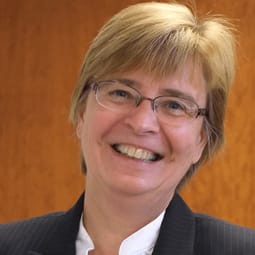
Susan Olesik
Professor and Chair, Department of Chemistry and Biochemistry, Ohio State University, USA
False

Professor and Chair, Department of Chemistry and Biochemistry, Ohio State University, USA
Passion: The world needs more sensitive methods for the analysis of trace components in complex matrices. For example, we need to improve our ability to detect trace pollutants in nature’s water. We also need to improve our ability to detect trace levels of metabolites in body fluids. More and more evidence is appearing that shows, in both cases, that the combination of trace components in these complex matrices may have adverse effects on biota and on human health. We are developing nanoscale-based materials with plans to improve the efficiency of separation devices and to improve SALDI (surface assisted laser desorption ionization) techniques for mass spectrometry. We need faster and more efficient separation techniques that are compatible with mass spectrometry. SALDI-MS needs higher ionization efficiency to improve detection limits.
Pivotal moment: Early in my career, I received a call from a group in NASA who were working on the Cassini-Huygens probe. They had attended a talk of mine at a conference and they were wondering if I could contribute column technology for the Huygens probe. I was floored. We were so thrilled to make this contribution. When the Huygens probe visited Titan, I was even more thrilled!
On a different front, at a similar time in my career, I worked with my daughter’s elementary school teacher to launch the Wonders of Our World (WOW) science outreach program (http://wow.osu.edu), which assists whole elementary schools once a month with science experiments using volunteer scientists. All schools who have stayed in the program for the entire three years of the program have seen substantial improvements in their science and math standardized test scores. Today, we have alumni of the early days of the program volunteering. Scientists must continue to show their enthusiasm for science to the rest of the world. It is a leadership responsibility that we must accept.
Prediction: Major advances are happening in 3D printing. If this technology can improve to the point of printing at the nanoscopic level, it will be huge.
Receive the latest analytical scientist news, personalities, education, and career development – weekly to your inbox.

False
False
False